Ask Ethan: What should a black hole’s event horizon look like?

You might think that it should be all black, but then how would we see it?
“It is conceptually interesting, if not astrophysically very important, to calculate the precise apparent shape of the black hole… Unfortunately, there seems to be no hope of observing this effect.” –Jim Bardeen
Earlier this month, telescopes from all around the world took data, simultaneously, of the Milky Way’s central black hole. Of all the black holes that are known in the Universe, the one at our galactic center — Sagittarius A* — is special. From our point of view, its event horizon is the largest of all black holes. It’s so large that telescopes positioned at different locations on Earth should be able to directly image it, if they all viewed it simultaneously. While it will take months to combine and analyze the data from all the different telescopes, we should get our first image of an event horizon by the end of 2017. So what will it looks like? That’s the question of Dan Barrett, who’s seen some illustrations and is a bit puzzled:
Shouldn’t the event horizon completely surround the black hole like an egg shell? All the artist renderings of a black hole are like slicing a hard boiled egg in half and showing that image. How is it that the event horizon does not completely surround the black hole?
There are a few different classes of illustrations floating around, to be sure. But which ones, if any, are correct?
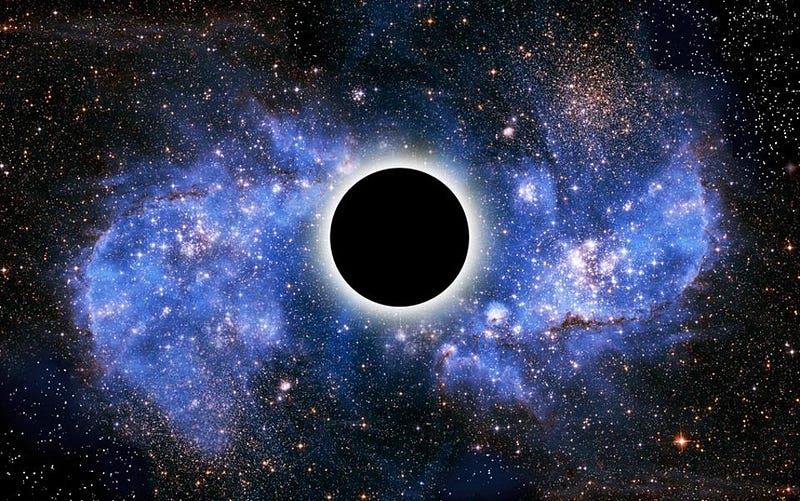
The oldest type of illustration is simply a circular, black disk, blocking out all the background light from behind it. This makes sense if you think about what a black hole actually is: a collection of mass that’s so great and so compact that the escape velocity from its surface is greater than the speed of light! Since nothing can move that quickly, not even the forces or interactions between the particles inside the black hole, the inside of a black hole collapses to a singularity, and an event horizon is created around the black hole. From this spherical region of space, no light can escape, and so it should appear as a black circle, from any perspective, superimposed on the background of the Universe.
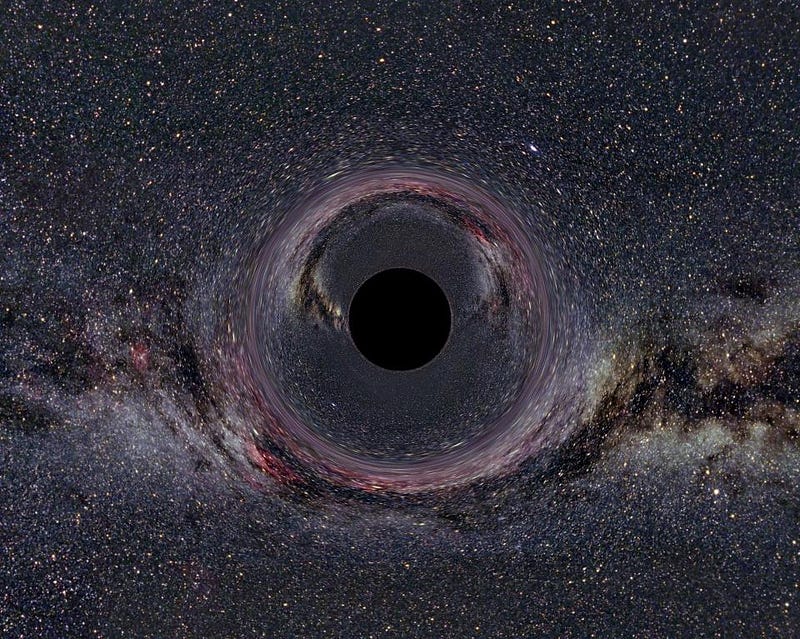
But there’s more to the story than that. Because of their gravity, black holes will magnify and distort any background light, due to the effect of gravitational lensing. This is a more detailed and accurate illustration of what a black hole looks like, as it also possesses an apparent event horizon sized appropriately with the curvature of space in General Relativity.
Unfortunately, these illustrations are flawed, too: they fail to account for foreground material and for accretion around the black hole. Some illustrations, though, do successfully add these in.
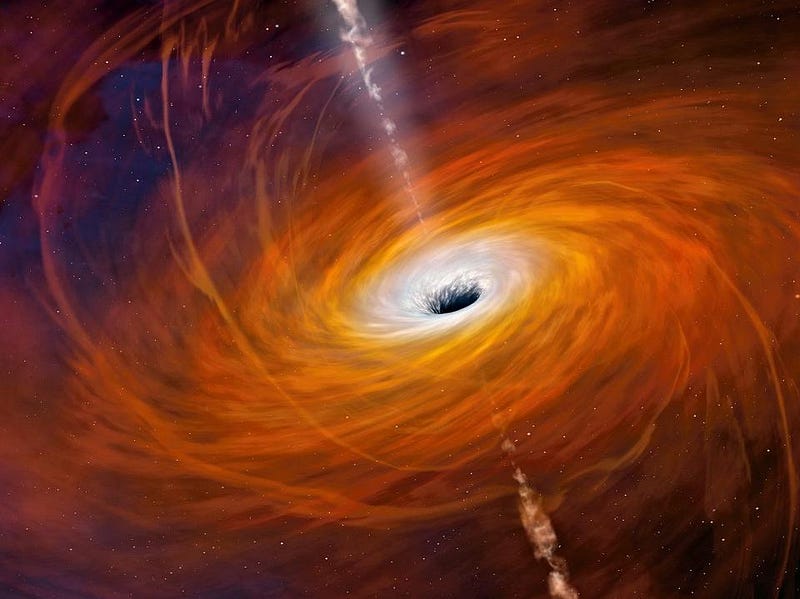
Because of their tremendous gravitational effects, black holes will form accretion disks in the presence of other sources of matter. Asteroids, gas clouds, or even entire stars will be torn apart by the tidal forces coming from an object as massive as a black hole. Due to the conservation of angular momentum, and of collisions between the various infalling particles, a disk-like object will emerge around the black hole, which will heat up and emit radiation. In the innermost regions, particles occasionally fall in, adding to the mass of the black hole, while the material in front of the black hole will obscure part of the sphere/circle you’d otherwise see.
But the event horizon itself isn’t transparent, and you shouldn’t be able to see the matter behind it.
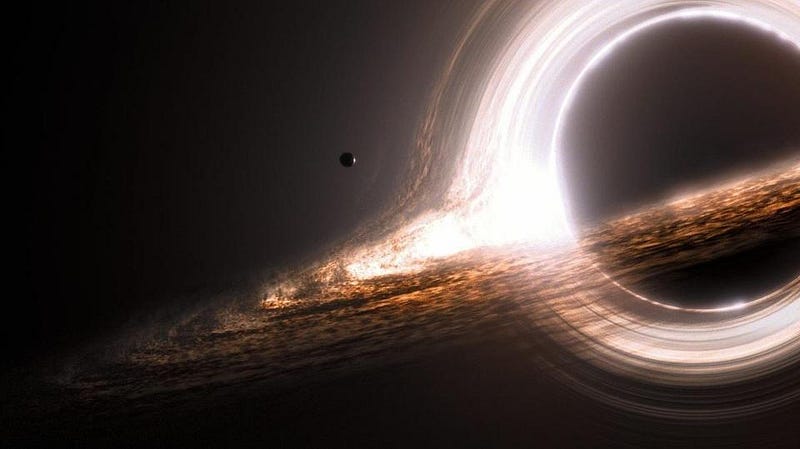
It might seem surprising that a Hollywood film — Interstellar — has a more accurate illustration of a black hole than many of the professional pieces of artwork created for/by NASA, but misconceptions abound, even among professionals, when it comes to black holes. Black holes don’t suck matter in; they simply gravitate. Black holes don’t tear things apart because of any extra force; it’s simply tidal forces — where one part of the infalling object is closer to the center than another — that does it. And most importantly, black holes rarely exist in a “naked” state, but rather exist in the vicinity of other matter, such as at the center of our galaxy.
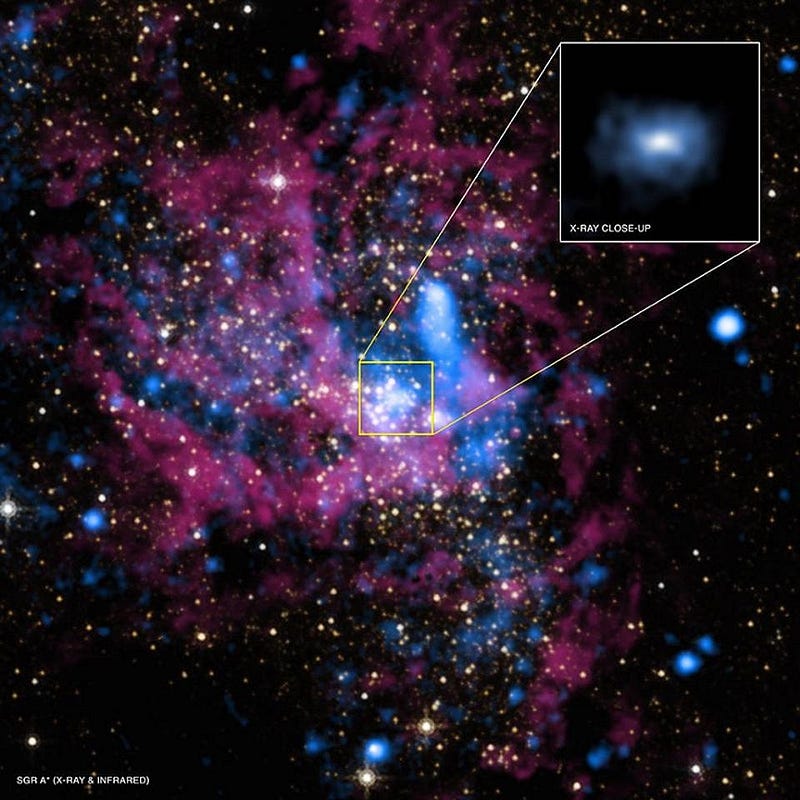
So with all of that in mind, what are the hard-boiled-egg images that have been going around? Remember, we can’t image the black hole itself, because it doesn’t emit light! All we can do is look at a particular wavelength, and see a combination of the emitting light that comes from around, behind and in front of the black hole itself. The expected signal, indeed, does resemble a split hard-boiled egg.
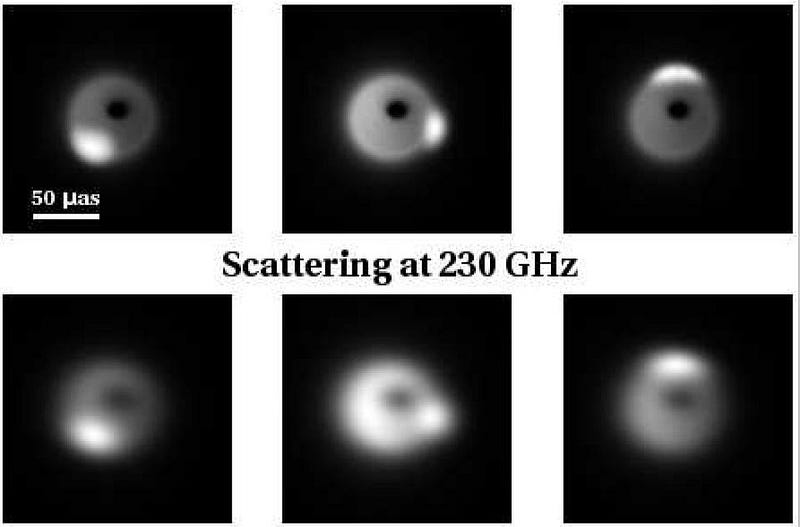
This has to do with what it is we’re imaging. We can’t look in X-rays, because there are simply too few X-ray photons overall. We can’t look in visible light, because the galactic center is opaque it it. And we can’t look in the infrared, because the atmosphere blocks infrared light. But what we can do is look in the radio, and we can do it all over the world, simulataneously, to get the optimal resolution possible.
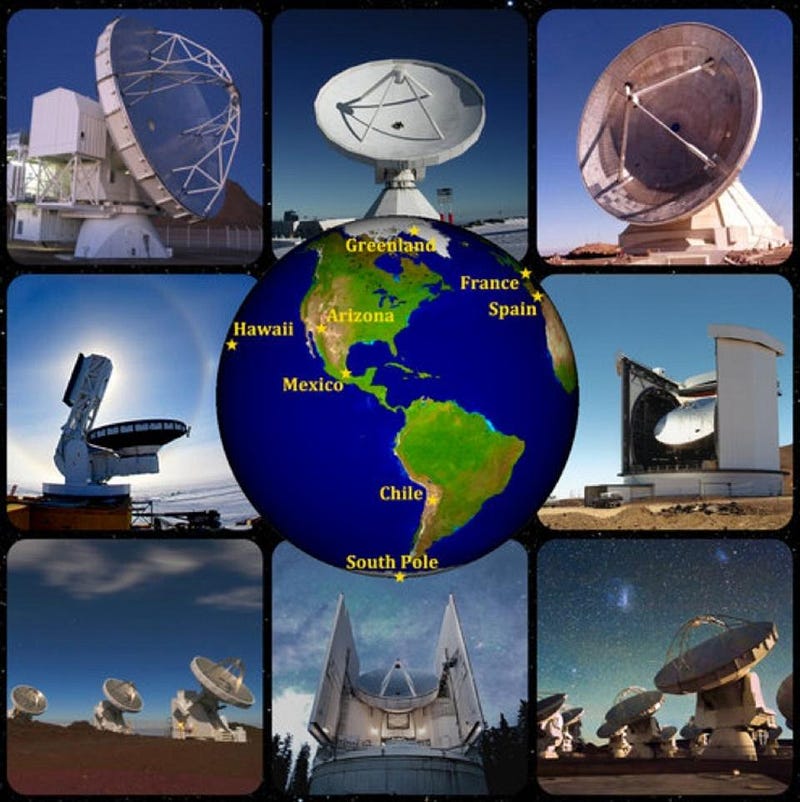
The black hole at the galactic center has an angular size of about 37 micro-arc-seconds, while the resolution of this telescope array is around 15 micro-arc-seconds, so we should be able to see it! At radio frequencies, the overwhelming majority of that radiation comes from charged matter particles being accelerated around the black hole. We don’t know how the disk will be oriented, whether there will be multiple disks, whether it will be more like a swarm of bees or more like a compact disk. We also don’t know whether it will prefer one “side” of the black hole, as viewed from our perspective, over another.
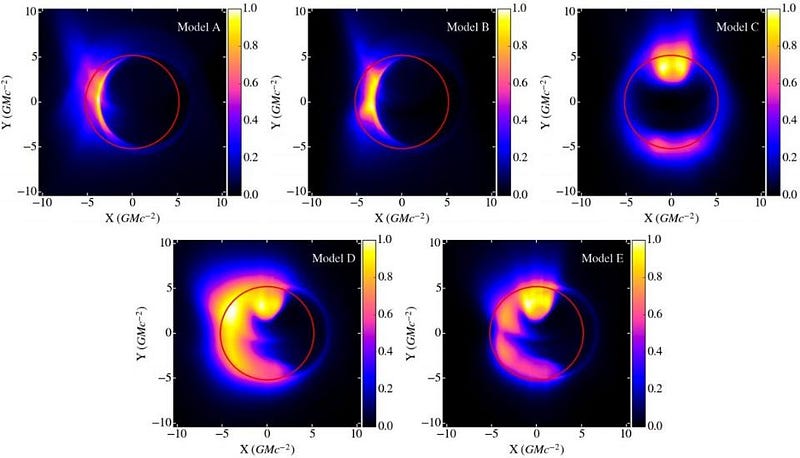
We fully expect the event horizon to be real, to be of a specific size, and to block all the light coming from behind it. But we also expect that there will be some signal in front of it, that the signal will be messy due to the messy environment around the black hole, and that the orientation of the disk with respect to the black hole will play an important role in determining what we see.
One side is brighter as the disk rotates towards us; one side is fainter as the disk rotates away. The entire “outline” of the event horizon may be visible as well, thanks to the effect of gravitational lensing. Perhaps most importantly, whether the disk is seen “edge-on” or “face-on” with respect to us will drastically alter the signal, as the 1st and 3rd panels below illustrate.

There are other effects we can test for, including:
- whether the black hole has the right size as predicted by general relativity,
- whether the event horizon is circular (as predicted), or oblate or prolate instead,
- whether the radio emissions extend farther than we thought,
or whether there are any other deviations from the expected behavior. This is a brand new frontier in physics, and we’re poised to actually test it directly. One thing’s for certain: no matter what it is that the Event Horizon Telescope sees, we’re bound to learn something new and wonderful about some of the most extreme objects and conditions in the Universe!
Send in your Ask Ethan questions to startswithabang at gmail dot com!
Starts With A Bang is based at Forbes, republished on Medium thanks to our Patreon supporters. Order Ethan’s first book, Beyond The Galaxy, and pre-order his next, Treknology: The Science of Star Trek from Tricorders to Warp Drive!





